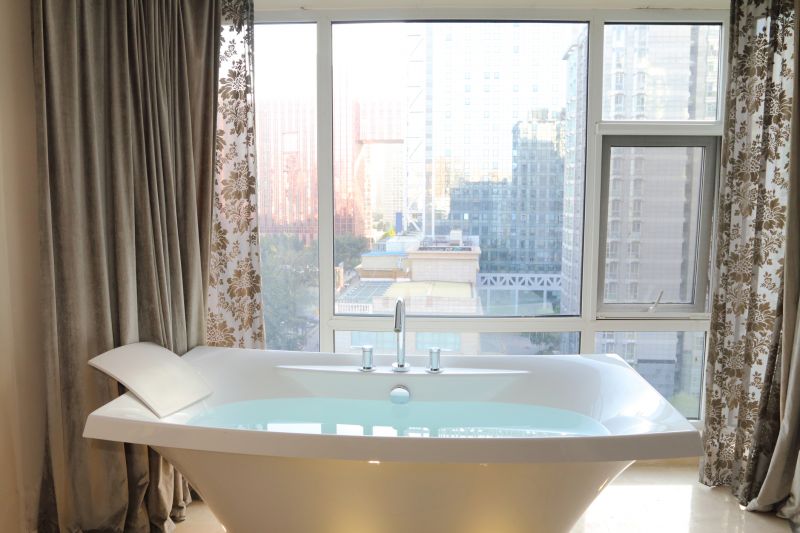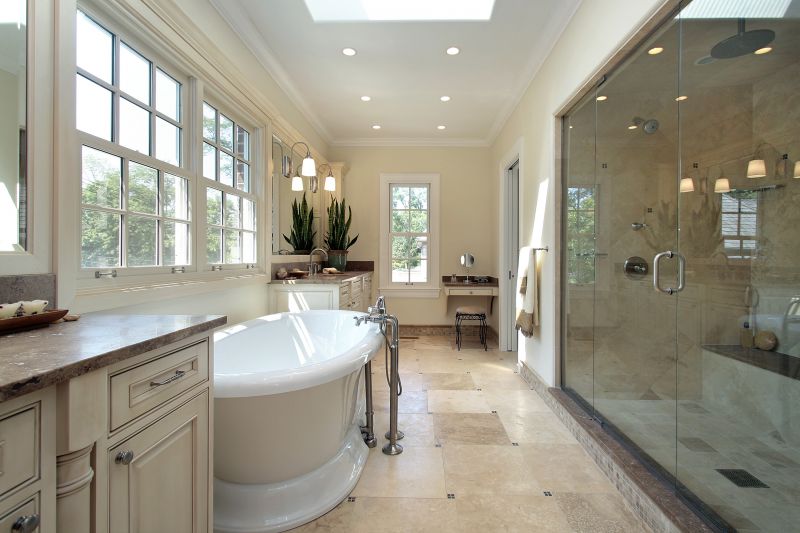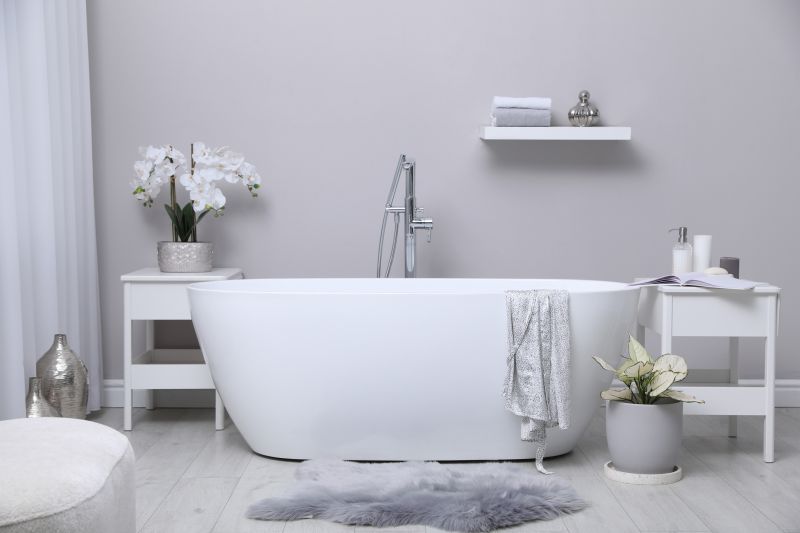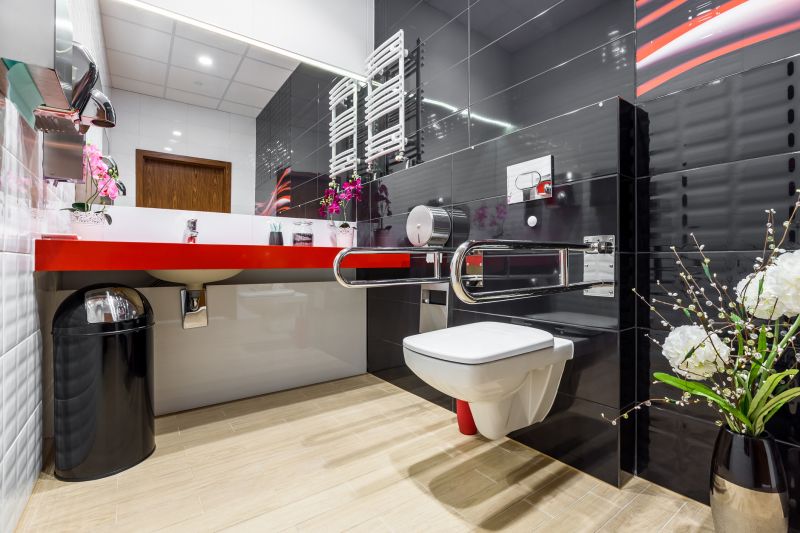Bathtub Size Compatibility
Shop for Bathtub Size Compatibility

When considering a new bathtub for your home, understanding the size compatibility is crucial to ensure a perfect fit both physically and aesthetically within your bathroom space. Homeowners in Cody, Wyoming, where homes often feature unique layouts, need to consider a variety of factors to make the right choice.
One of the primary considerations is the size of your bathroom. Measuring the available space accurately will help in determining the maximum dimensions for your new bathtub. Standard bathtub sizes range from 60 inches in length for alcove tubs to over 70 inches for freestanding models. The width and depth also vary, impacting both comfort and fit.
Another important aspect is the style of the bathtub, as it influences the overall dimensions. Alcove bathtubs are designed to fit into a three-wall enclosure, making them ideal for smaller spaces. Freestanding tubs, on the other hand, require more room and are often used as statement pieces in larger bathrooms.
Homeowners should also consider the intended use of the bathtub. If relaxation and long soaks are a priority, a deeper soaking tub might be preferred. For families with young children, a standard tub might be more practical. It's also important to consider the weight of the tub, especially if your bathroom is on an upper level, as structural support may be needed.
Options at a glance can include:
- Alcove Bathtubs: Typically 60 inches long, ideal for small spaces.
- Freestanding Bathtubs: Range from 60 to 72 inches, requiring more space.
- Corner Bathtubs: Space-efficient for awkward layouts.
- Drop-in Bathtubs: Require a deck or platform, offering design flexibility.
Material choice also plays a role in size and compatibility. Acrylic and fiberglass tubs are lightweight and versatile, while cast iron tubs are heavier and may require additional support. Each material offers different benefits in terms of durability and maintenance.
For those in Cody, Wyoming, where the climate can be quite cold, considering a bathtub with better heat retention might be beneficial. Cast iron and stone resin tubs are known for their ability to retain heat longer, enhancing the bathing experience during colder months.
Lastly, consider the plumbing and installation requirements. Ensure that the chosen bathtub size aligns with existing plumbing or be prepared for potential modifications. Consulting with a local plumber can provide insights into any specific requirements or challenges based on your home’s layout.
By taking these factors into account, homeowners can make informed decisions on bathtub size compatibility, ensuring a seamless integration into their bathroom space while meeting their personal preferences and needs.
Understanding Bathtub Size Compatibility
Shop for Understanding Bathtub Size Compatibility
Key Factors to Consider for a Perfect Fit
When planning a bathroom remodel or installation, understanding bathtub size compatibility is crucial for ensuring that your new fixture fits seamlessly into your space. Homeowners in Cody, Wyoming, often face unique challenges due to varying bathroom dimensions and architectural styles. Selecting the right bathtub size involves more than just measuring the available space; it requires a comprehensive understanding of several key factors that can influence your choice.
One of the primary considerations is the actual dimensions of the bathroom. Typical bathtubs range from 60 to 72 inches in length and 30 to 42 inches in width. However, older homes in Cody might have smaller bathrooms, necessitating a more compact option. It's essential to measure not only the available floor space but also the doorway and hallway dimensions to ensure the bathtub can be moved into the bathroom without any issues.

Another important factor is the intended use of the bathtub. For those who enjoy long, relaxing soaks, a deeper tub might be preferable. Standard bathtubs usually have a depth of 14 to 20 inches, but soaking tubs can be deeper, offering a more immersive experience. Consideration of who will be using the tub is also important; for families with young children, a shallower tub might be safer and more practical.
The style of the bathtub can also impact size compatibility. Freestanding tubs, for instance, require more space around them for both aesthetic and functional purposes. In contrast, alcove bathtubs are designed to fit into a three-wall enclosure, making them a space-efficient option for smaller bathrooms. Homeowners should also consider corner tubs, which can be an excellent choice for maximizing space in irregularly shaped bathrooms.
Options at a glance can help simplify the decision-making process. Here are some common bathtub styles and their typical size ranges:
- Alcove Bathtubs: 60-72 inches long, 30-32 inches wide
- Freestanding Bathtubs: 55-72 inches long, 27-32 inches wide
- Corner Bathtubs: 48-60 inches on each side
- Drop-in Bathtubs: 60-72 inches long, 30-36 inches wide
Materials also play a role in the overall size and weight of the bathtub. Cast iron tubs are durable but heavy, which may require additional floor support. Acrylic and fiberglass options are lighter and easier to install but may not offer the same longevity. Homeowners should weigh these considerations against their budget and long-term plans for the bathroom.
In conclusion, selecting the right bathtub size involves balancing personal preferences with practical considerations. By thoroughly assessing the available space, intended use, and style preferences, homeowners in Cody can find a bathtub that not only fits their bathroom but also enhances its overall functionality and aesthetic appeal.
Selecting the Right Bathtub Size for Your Cody Home
Shop for Selecting the Right Bathtub Size for Your Cody Home
Tips for Choosing the Perfect Bathtub Dimensions
Choosing the right bathtub size is an important decision for homeowners in Cody, Wyoming. The bathtub is often the centerpiece of a bathroom, influencing both the aesthetic appeal and functionality of the space. With a variety of sizes and styles available, understanding the factors to consider can help ensure a harmonious fit in your home.
One of the primary considerations is the available space in your bathroom. It's essential to measure the area where you plan to install the bathtub, taking into account not only the length and width but also the depth and height. Standard bathtubs typically range from 60 to 72 inches in length, 30 to 32 inches in width, and 14 to 20 inches in depth. However, your specific needs and preferences might lead you to consider custom options.
In addition to size, the style of bathtub can influence your decision. Freestanding tubs, for example, offer a classic look and can be placed anywhere in the room with adequate plumbing. Alcove tubs are more space-efficient and fit snugly against three walls, making them ideal for smaller bathrooms. Corner tubs maximize space in larger bathrooms, providing a luxurious feel without overwhelming the room.

Another aspect to consider is the intended use of the bathtub. If relaxation and soaking are priorities, a deeper tub might be more suitable. On the other hand, if the bathtub will primarily be used for quick showers, a standard depth might suffice. Additionally, consider the needs of all household members, ensuring the bathtub is accessible and comfortable for everyone.
Material choice can also impact the perceived size and comfort of a bathtub. Options such as acrylic, fiberglass, and cast iron each offer different benefits in terms of durability, weight, and heat retention. While acrylic and fiberglass are lightweight and versatile, cast iron offers a more traditional look and excellent heat retention, though it is heavier and may require additional floor support.
Options at a glance:
- Freestanding tubs: Flexible placement, classic design
- Alcove tubs: Space-efficient, practical for smaller bathrooms
- Corner tubs: Luxurious, ideal for larger spaces
- Drop-in tubs: Customizable, requires a built-in deck
- Walk-in tubs: Accessibility-focused, suitable for those with mobility concerns
A small comparison of popular bathtub styles might help clarify the differences:
| Style | Space Required | Installation Complexity |
|---|---|---|
| Freestanding | Varies | Moderate |
| Alcove | Compact | Simple |
| Corner | Spacious | Complex |
Ultimately, selecting the right bathtub size for your Cody home involves balancing practical considerations with personal preferences. By carefully assessing your space, style preferences, and household needs, you can find a bathtub that complements your bathroom and enhances your daily routine.




